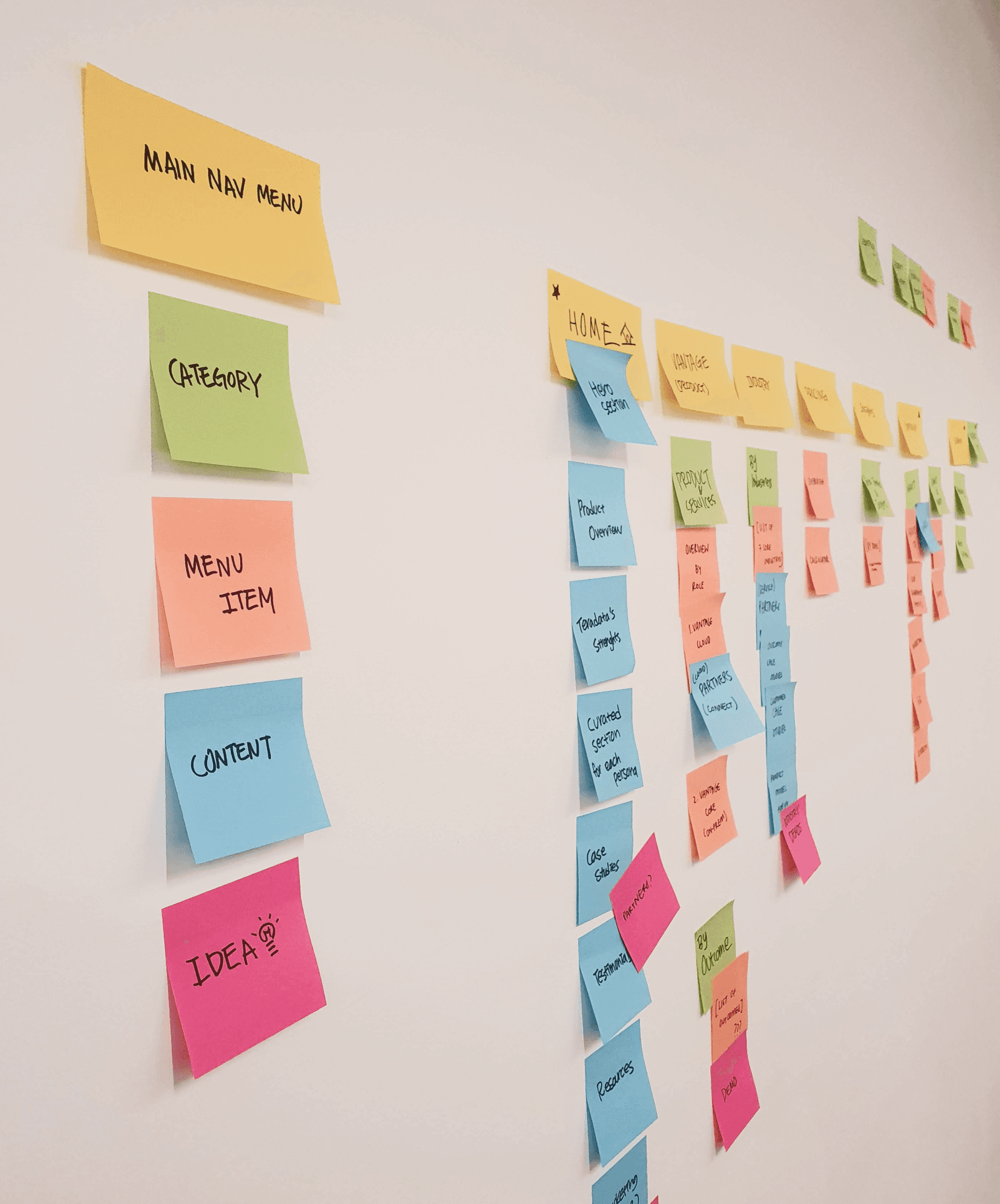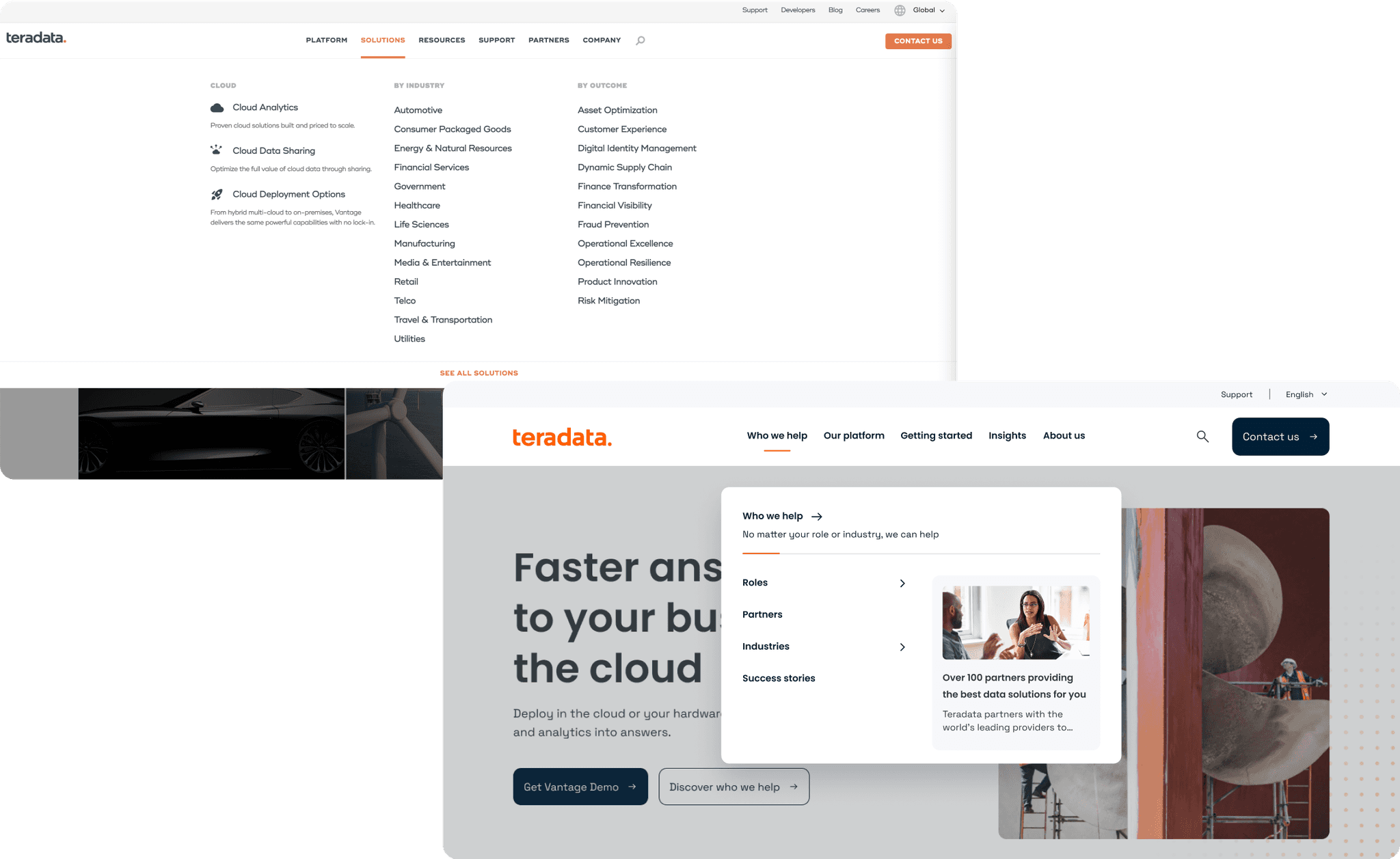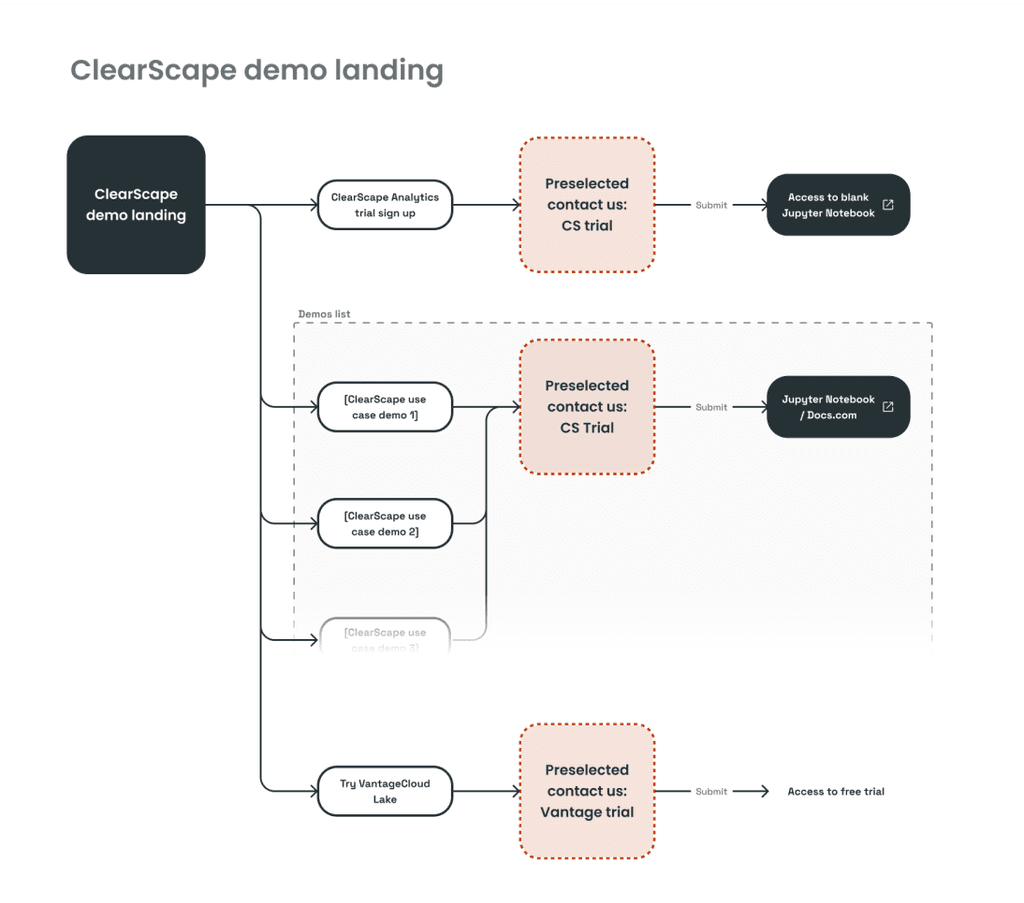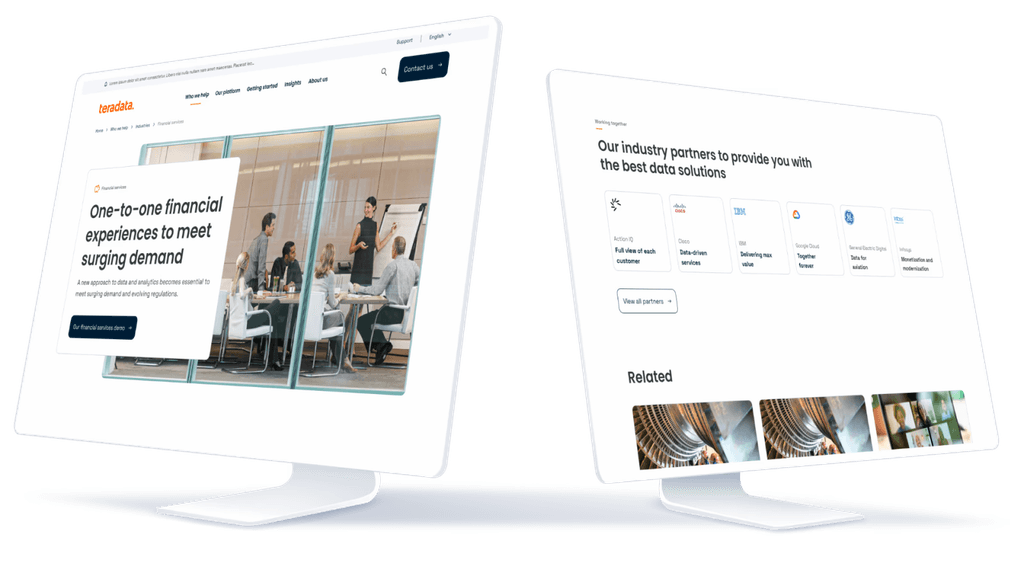Teradata
Driving engagement for a modern audience

Disciplines
User experience Content design Iterative design Design system & documentation
Year
2022-23
Status
Shipped!
Who is Teradata?
Teradata approached us to create an experience which will help revitalise their company perception and reflect their best-in-class data analytics platform.
Teradata is a leading provider of enterprise data warehousing and analytics solutions. Their products and services are used by companies across a variety of industries to make data-driven decisions and gain insights that drive business growth.
My Role
Create user-centric UX foundations including content prioritisation, developing user flows and wireframes that serves as blueprints for designs
Create designs and prototype flows, present designs to client on a weekly basis and incorporate feedback
Develop and maintain a brand new design library
Create design guidelines and annotations for components and screens
Led handover meetings with developers to clarify designs and behaviour to ensure the final product is developed as intended
Challenges
The current website contained a lot of information accumulated over many years without proper management.
Inconsistent terminology causing confusion
Stakeholders across the business are not aligned on what the key information are.
We had to work alongside an ongoing rebranding process
How might we…
create a simplified and contextual web experience?
Research
Stakeholder interviews
We were able to hold interviews with 13 stakeholders consisting of executives and department leaders, I prepared and was able to lead several interviews to gather their needs and understanding of users’ behaviour.
Thematic analysis was used identify insights from the interviews and a use case library was created from our findings and ideation workshop.
Insights
Teradata’s unique selling point is in-database analytics capablities, price per query for large quantities suitable for large businesses
The perception was that Teradata had been overtaken, it used to be the best, but now there are better options
There are 3 main personas for the website:
Users, Choosers and ApproversIt takes about 300 days to convert a client from contact to onboarding


Design principles
01
Simplify complexity
02
Focus on what matters
03
Empower your users
Process
Current product and competitor audit
An audit of the information architecture of the current website allowed us to conduct a thorough investigation into what we can consolidate or remove.
We also did an information architecture, design language, tone of voice, accessibility and strengths and weaknesses audit of competing brands.

Sitemap
We took time to understand the product, industry and users through our own research, and with feedback from Teradata we were able to greatly simplify the site navigation from 91 to 24 main menu items


Content prioritisation and user flows
Simplification and prioritisation is key in this project, so before beginning each sprint, we identify the pages and content required. A content prioritisation stack is created to make sure each section serves a purpose and helps to tell a story. This also acts as guidance for the Teradata content team. Designs are then created and presented to the client every week to collect feedback for the next iteration.



Solution
1 platform
Unlimited possibilities


A streamlined experience
Addressing all each audience type directly.
Promoting the main client industries while providing catered information for all 13 industries.

Compelling stories users identify with
Accelerated, contextual engagement
Making sure users are never more than 3 clicks away from the information they’re looking for, and informing them of their whereabouts and getting the help they expect.


Building a future together
Showcasing benefits of becoming a partner and simplifying the enquiry process.
Design Library & guidelines
We built a design library from scratch, along with detailed guidelines to aid the development of the website.

Key Learnings & Reflection
Learning to work on complex topics and themes on a tight timeline
Researching about a new topic!
Extensive learning about the creation, management and governance of a new design library and guideline documentations
Delegating sections of work and managing progress
Communicating with the client and the team to push the outcome further whilst managing the workload